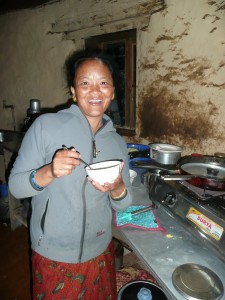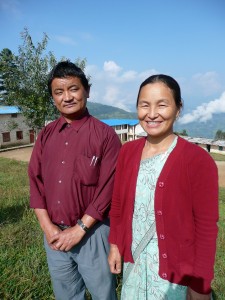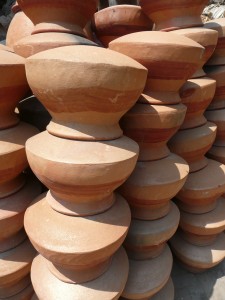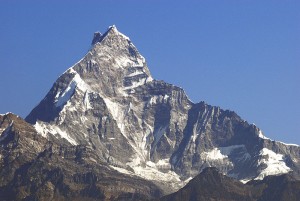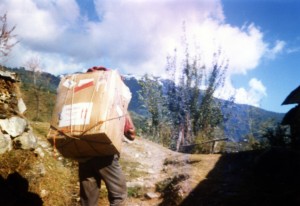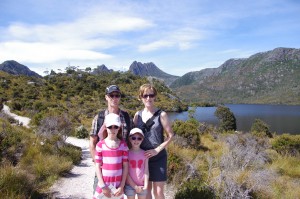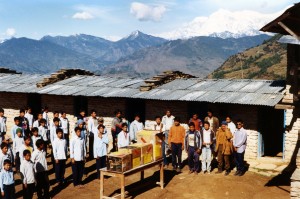Mahabir, myself and Matthew, a Canadian volunteer, walked to Nangi from Beni on a beautiful sunny day. Mahabir had business to finish in Beni so he took us to the path and told us to start walking…and we did walk…fast. Mathew was over a foot taller then me and his strides were enormous so we covered a few miles quickly despite the uphill terrain. About an hour later we heard Mahabir shouting to stop…looking downhill he was running and waving his arms. First and last time I ever saw him get excited. He arrived breathless and said we were on the wrong path.
But how could we be? All the way up we had stopped and asked people walking down and people sitting outside their homes the same question: “Is this the way to Nangi?”. Everyone had nodded or said yes. What we didn’t understand was that any question from a tourist in Nepal is answered with “yes”. Few people in those days could speak English, but they didn’t want to disappoint a visitor so they politely replied yes. So I would ask: “Do you speak English?”…and the answer was always “yes”…and still I would persist…”do you understand what I am saying?”…and of course the answer was “yes”. It took me a long time to catch on to the endless possibilities…of polite “yes” answers… and “yes”, it got me in trouble many times.
I arrived in Nangi and was greeted by Lila and Rupa, the two healthcare workers. They hid behind their head scarfs and giggled after introductions. They took me to a ramshackle building with holes in the roof, rats under the floor boards and two small rooms that sometimes served as the clinic. The medication room, which served as an office, had shelves for medications and a small table. The exam room was occupied by a typical wooden bed covered with a torn, stained thin piece of foam. Barely big enough for the three of us to stand in the rooms were 6×4 feet.
Most of the time they worked out of their homes because they made house calls to see patients too sick to walk to the clinic or they delivered babies in the security of the mother’s home. Mahabir understood they could do more with knowledge. They could acquire skills and provide advanced care…he saw the connection before I understood my most important duty…to teach more then provider healthcare. I would come to understand over the years the genius of his pairing the right people at the right time.
Join me next week for one more volunteer story…about Jonni from Finland…who did more for the health of the village then any medical team.

